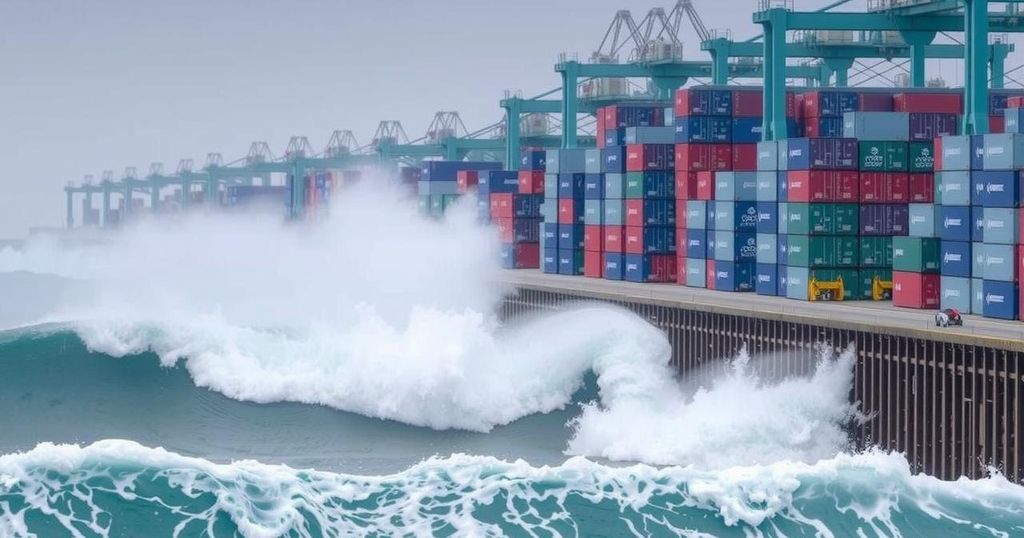Peru and Ecuador are currently experiencing significant coastal hazards caused by unusually high waves, measuring up to 13 feet, leading to extensive flooding, port closures, and the tragic loss of lives. This phenomenon is connected to climate change and abnormal weather patterns. The affected regions face economic and environmental challenges as communities struggle with the aftermath of this natural disaster during a peak tourist season.
Officials in both Peru and Ecuador have advised the public to remain away from coastal areas due to extraordinarily high waves causing significant damage and flooding. This meteorological phenomenon commenced on Christmas Day, intensifying on December 27 and 28, and is expected to persist until at least January 4. Reports indicate that waves have surged to heights of 13 feet (4 meters), severely affecting fishing communities, tourist hotspots, and leading to port closures across the region.
In response to this environmental challenge, the Peruvian government has shut down nearly 100 of its 121 seaports, particularly feeling the impact in northern regions. Striking visuals depict local fishermen’s boats being mercilessly tossed about by the waves, with the navy rescuing approximately 30 fishermen trapped offshore. Disturbingly, around 100 to 180 fishermen are still unaccounted for at sea, with reports of significant losses, including over 100 fishing vessels.
The abnormal wave activity has been attributed to climate change and unusual weather patterns, as explained by Civil Defense officials. They indicated that powerful winds from distant regions and unusually high tides contributed to this situation, dismissing theories of a tsunami or freak wave. Although forecasts predict a diminishment by the beginning of January, they caution that such extreme weather conditions could become more common as global temperatures rise.
Simultaneously, Peru is grappling with the consequences of an environmental emergency following an oil spill that contaminated approximately 10,000 square meters of ocean surface and impacted numerous local beaches and wildlife. As the nation faces disruption during the holiday season, it remains to be seen how businesses will rebound from these dire circumstances, which have already led to the tragic loss of two lives in Ecuador and one reported in Chile, amid the tumultuous wave activity.
The recent wave phenomenon along the coasts of Peru and Ecuador is a significant environmental issue linked to broader climate change effects. Coinciding with seasonal high tourist activity, it has devastated local economies reliant on coastal tourism and fishing industries. The scientific community has observed increasingly erratic weather patterns due to climate change, prompting concerns among authorities regarding future incidents of similar nature. The declaration of an environmental emergency due to oil spills underscores the precarious state of local ecosystems, which are vulnerable to both natural and human-induced disasters.
In conclusion, the substantial and destructive waves on the coasts of Peru and Ecuador pose severe risks to local communities, economies, and ecosystems. As officials attribute these phenomena to climate change-driven weather patterns, the urgency for adaptive strategies becomes clear. With the holiday season affected and lives lost, the regional governments face the dual challenge of weathering this crisis while addressing long-term environmental risks.
Original Source: maritime-executive.com






